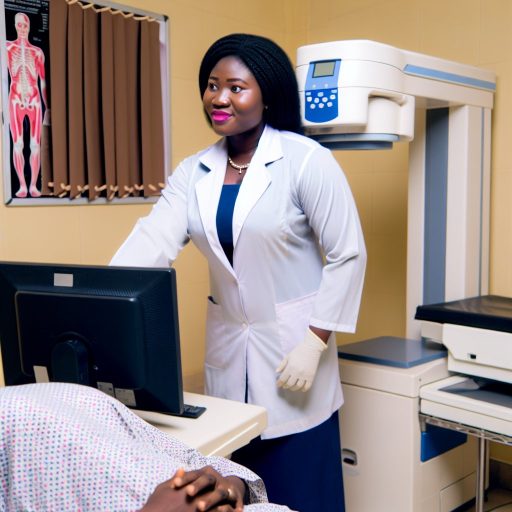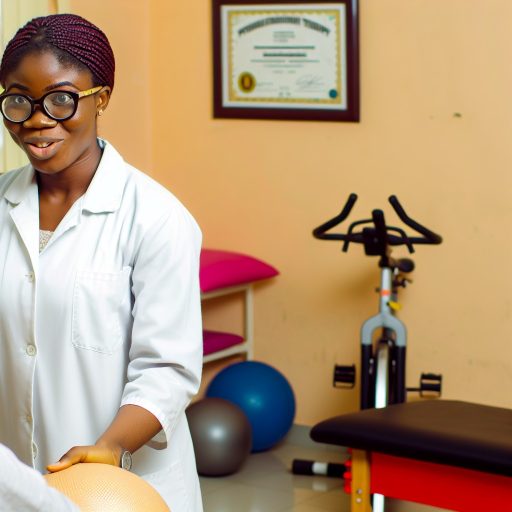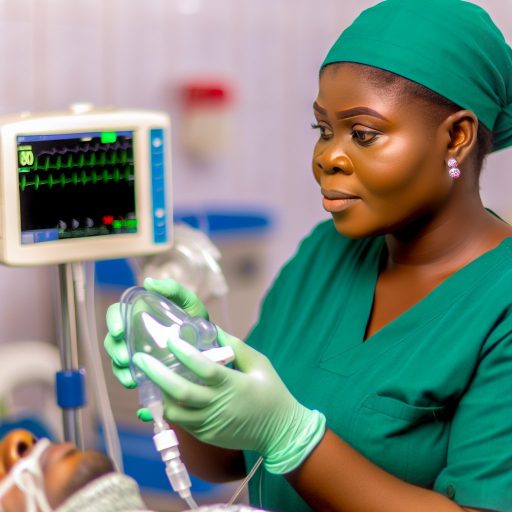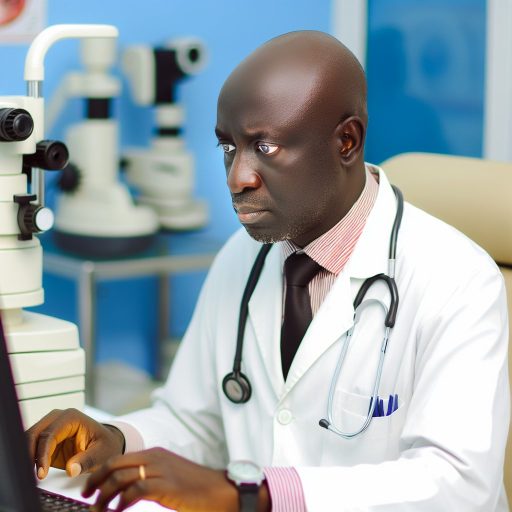Introduction:
Continuing Professional Development (CPD) is the ongoing process of learning and development for radiographers to enhance their knowledge and skills.
It is crucial for radiographers to keep up-to-date with the latest advancements in technology, techniques, and research in the field to provide optimal care for patients.
Radiographers play a vital role in the healthcare system by performing diagnostic imaging procedures such as X-rays, MRIs, and CT scans to help physicians diagnose and treat various medical conditions.
They are responsible for producing high-quality images and ensuring patient safety during imaging procedures.
CPD is essential for radiographers to stay current with advancements in the field.
It allows them to improve their practical skills, expand their theoretical knowledge, and keep abreast of changes in best practices and guidelines.
By participating in CPD activities, radiographers can enhance their professional competence and deliver better outcomes for patients.
Importance of CPD for Radiographers:
Continuing Professional Development (CPD) is crucial for radiographers to maintain and enhance their skills.
CPD ensures that radiographers stay updated with the latest advancements in imaging technology and techniques.
By participating in CPD activities, radiographers can provide high-quality patient care by delivering accurate and precise diagnostic results.
CPD helps radiographers improve their communication skills, which are essential for interacting with patients and other healthcare professionals.
Engaging in CPD activities allows radiographers to stay abreast of regulatory changes and best practices in radiography.
By continuously learning and developing their skills, radiographers can adapt to new challenges and deliver efficient healthcare services.
CPD plays a vital role in ensuring that radiographers maintain professional standards and ethics in their practice.
Through CPD, radiographers can enhance their problem-solving abilities and critical thinking skills, which are essential in their daily practice.
Benefits of CPD for Career Advancement and Job Satisfaction:
CPD provides radiographers with opportunities for career advancement by acquiring new specialized skills and certifications.
Engaging in CPD activities can lead to increased job satisfaction as radiographers feel more competent and confident in their roles.
CPD allows radiographers to expand their professional network and collaborate with other healthcare professionals, opening doors for career growth.
By investing in CPD, radiographers demonstrate their commitment to continuous learning and professional development, which can lead to recognition and rewards.
Radiographers who participate in CPD activities are more likely to stay motivated and engaged in their work, leading to improved job performance.
CPD helps radiographers identify areas for improvement and sets goals for personal and professional development, enhancing their career prospects.
Through CPD, radiographers can explore new career paths within the field of radiography and pursue opportunities for specialization or leadership roles.
By staying current and updated through CPD, radiographers can adapt to changing healthcare trends and advancements, safeguarding their job security.
Types of CPD Activities for Radiographers:
Radiographers have a variety of Continuing Professional Development (CPD) activities available to enhance their skills and knowledge in the field.
Workshops:
Workshops provide hands-on learning experiences for radiographers to improve their technical skills and stay up-to-date with the latest equipment and techniques.
Conferences:
Attending conferences allows radiographers to network with industry experts, learn about cutting-edge research, and gain new perspectives on best practices in radiography.
Online Courses:
Online courses offer flexibility for radiographers to learn at their own pace and convenience, covering a wide range of topics from radiation safety to imaging technology.
Mentorship Programs:
Mentorship programs pair experienced radiographers with those looking to advance their careers, providing personalized guidance and support to help achieve professional goals.
Having a diverse range of CPD activities is essential for radiographers as it caters to different learning styles and preferences.
While some radiographers may prefer hands-on workshops, others may benefit more from online courses that offer flexibility in scheduling.
For example, a radiographer who enjoys interaction with peers and experts in the field might find conferences to be the most beneficial CPD activity.
On the other hand, a radiographer who values one-on-one guidance and support may thrive in a mentorship program.
By engaging in various CPD activities, radiographers can expand their knowledge, stay current with advancements in the field, and enhance their professional skills.
This continuous learning and development are crucial for providing high-quality patient care and ensuring career growth and satisfaction in the field of radiography.
Explore Further: Radiology and Radiography Conferences in Nigeria
Requirements for CPD Compliance:
– In Nigeria, radiographers are required to complete a minimum of 15 CPD credit units annually.
– These credits should be obtained from accredited CPD programs or courses.
– Radiographers must keep a record of their CPD activities and present it during audits.
Importance of Meeting CPD Requirements:
– Meeting CPD requirements ensures that radiographers stay updated with advancements in the field.
– It enhances their knowledge and skills, ultimately improving patient care.
Transform Your Career with Expert Guidance
Get personalized mentorship consulting that’s tailored to your unique path. Our expert advice is actionable and exclusive.
Get Started– Continuous learning through CPD also boosts professional confidence and credibility.
Impact of Non-Compliance with CPD Requirements:
– Failure to comply with CPD requirements can lead to license suspension or revocation.
– It can hinder career growth opportunities and impact job prospects.
– Non-compliance may also damage the reputation and trust of patients and colleagues.
Meeting CPD requirements is crucial for radiographers’ professional development, career advancement, and maintaining standards in the field.
Gain More Insights: The Importance of Regular Eye Exams for Nigerians
Common Challenges in CPD for Radiographers
Meeting Continuing Professional Development (CPD) requirements can be challenging for radiographers due to various obstacles they face in their professional development journey.
Some of the common challenges include:
- Financial Constraints
- Lack of Time
- Limited Access to CPD Activities
Financial Constraints
One of the major challenges for radiographers in pursuing CPD is the financial constraints associated with attending training courses, conferences, and workshops.
These activities often come with a cost, including registration fees, travel expenses, and accommodation.
To overcome financial barriers, radiographers can explore options such as applying for grants, scholarships, or funding opportunities provided by professional organizations, employers, or government agencies.
They can also consider seeking financial support from their employers or utilizing personal savings dedicated to professional development.
Lack of Time
Another common challenge faced by radiographers is the lack of time to dedicate to CPD activities.
Balancing work responsibilities, personal commitments, and professional development can be daunting, making it difficult to find time for training and learning opportunities.
To manage time effectively, radiographers can utilize time management techniques such as creating a schedule, setting priorities, eliminating distractions, and delegating tasks when possible.
They can also consider incorporating CPD activities into their daily routine or taking advantage of online learning platforms that offer flexible scheduling options.
Limited Access to CPD Activities
Radiographers in certain geographical locations or healthcare settings may face limited access to CPD activities, such as training programs, workshops, or conferences.
This lack of access can hinder their professional development and ability to meet CPD requirements.
To overcome this challenge, radiographers can explore alternative CPD options, such as online courses, webinars, virtual conferences, or self-directed learning modules.
They can also collaborate with colleagues or professional networks to share resources, knowledge, and experiences, thereby expanding their access to CPD opportunities.
While challenges in CPD for radiographers are inevitable, proactive strategies and a positive mindset can help overcome these obstacles and pave the way for continuous professional growth and excellence in the field of radiography.
Discover More: Innovative Teaching Methods in Nigerian Medical Schools
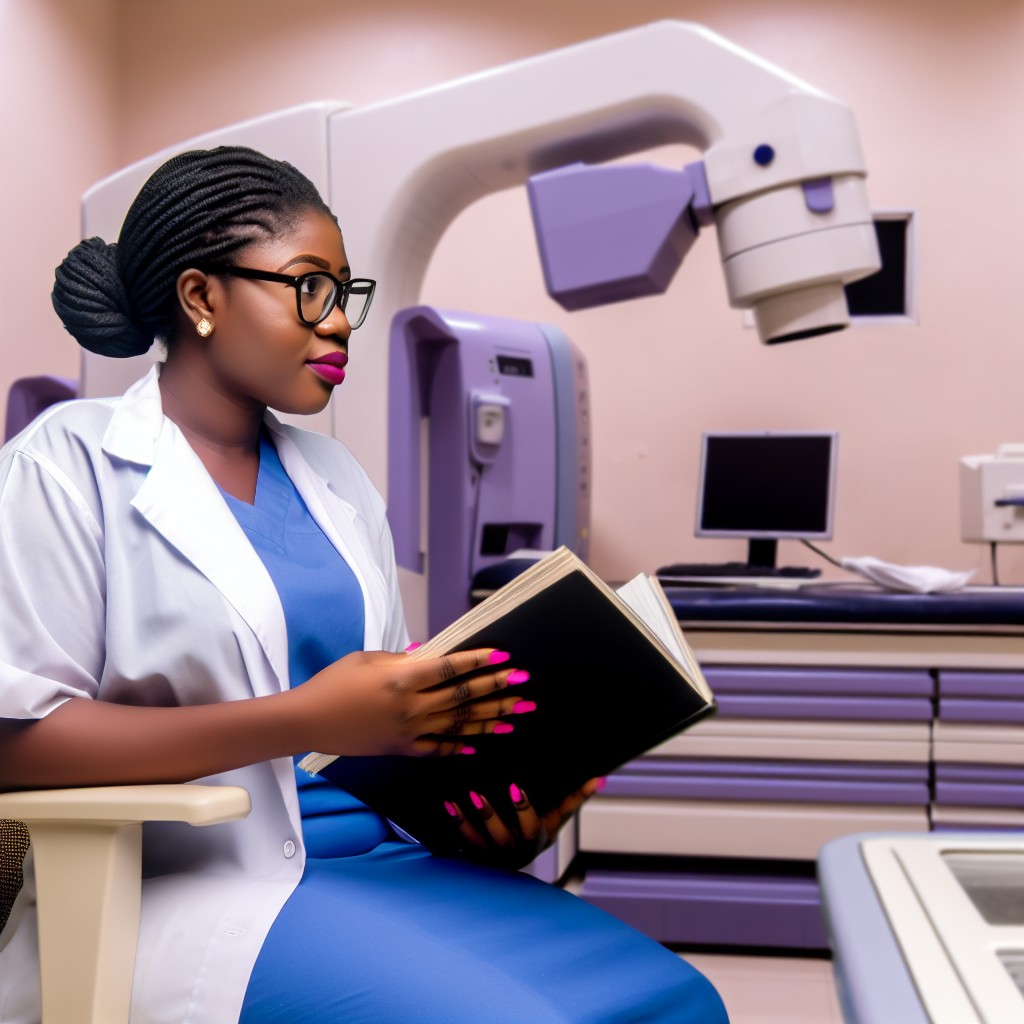
Tips for Effective CPD Planning:
Creating a personalized CPD plan is essential for radiographers to stay current in their field.
Here are some tips to help you develop an effective CPD plan:
Set Clear Goals and Objectives:
- Define what you aim to achieve through your CPD activities.
- Set specific and measurable goals to track your progress.
- Identify areas for improvement and focus on relevant skills.
Align CPD Activities with Career Goals:
- Choose CPD activities that are directly related to your career path.
- Consider your long-term professional aspirations when selecting activities.
- Ensure that CPD activities will help you develop skills valued in your field.
Explore a Variety of CPD Options:
- Attend conferences, workshops, and seminars to gain new knowledge.
- Engage in online courses and webinars to learn at your convenience.
- Participate in peer-reviewed journals and research projects to stay updated.
Create a Structured CPD Plan:
- Outline a timeline for completing your CPD activities throughout the year.
- Allocate time and resources to devote to each CPD activity.
- Track your progress and reflect on your learning experiences regularly.
Seek Feedback and Support:
- Discuss your CPD plan with mentors, colleagues, or supervisors for input.
- Solicit feedback on your performance and areas for improvement.
- Join professional organizations or networks to connect with peers in your field.
By following these tips, radiographers can create a thoughtful and effective CPD plan that aligns with their career goals and fosters professional growth.
Gain More Insights: Parasite Control Programs in Nigeria
Resources for CPD for Radiographers:
Professional associations offer valuable resources for radiographers to engage in CPD.
Organizations such as the American Society of Radiologic Technologists provide webinars and courses.
Online platforms like ProCE, RAD-Cast, and eRADIMAGING offer a wide range of CPD materials.
Networking and collaboration are essential for radiographers to access diverse CPD opportunities.
Attending conferences and workshops allows radiographers to learn from experts in the field.
Professional associations also facilitate networking events that connect radiographers with peers and mentors.
Collaborating with colleagues on research projects can lead to valuable CPD experiences.
Joining online forums and discussion groups can provide insights into new CPD resources.
Recommendations for reputable CPD providers in radiography:
- The American Society of Radiologic Technologists (ASRT) offers a variety of CPD opportunities.
- The Radiological Society of North America (RSNA) provides high-quality CPD materials for radiographers.
- The American Registry of Radiologic Technologists (ARRT) offers certification and CPD resources for radiographers.
Accessing resources for CPD is crucial for radiographers to stay updated with the latest advancements in the field and maintain their professional competence.
By actively engaging in CPD activities, radiographers can enhance their skills, expand their knowledge, and improve patient care outcomes.
Importance of Continuing Professional Development for Radiographers
Continuing professional development (CPD) is crucial for radiographers to stay updated with advancements in the field.
CPD helps radiographers maintain professional standards by enhancing their skills and knowledge through ongoing education and training.
It is essential for radiographers to prioritize CPD to ensure they provide the best possible care to their patients.
By engaging in CPD activities, radiographers can continuously improve and grow in their careers.
This leads to better outcomes for both patients and themselves.
Therefore, it is imperative for radiographers to embrace CPD as a necessary tool for professional development and excellence in the field.

